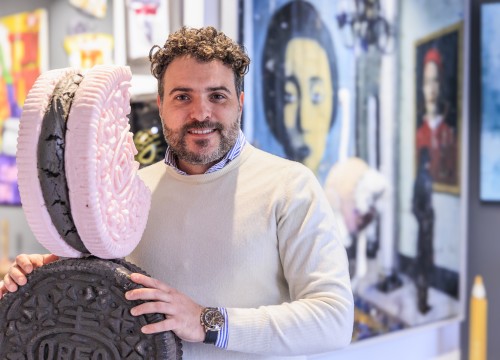Drawings, poems, letters and architectural projects of his second stay in Rome on view
The British Museum in London recounts Michelangelo through a series of precious drawings, poems, letters, and architectural projects relating to his second stay in Rome, from 1534 until his death thirty years later. The great genius left a seemingly democratic republican Florence in doubt, but in the midst of those political controversies that later brought to power Cosimo I de’ Medici (1537).
Rome is also in full swing: Michelangelo is on the threshold of 60, and this is certainly a venerable age for the time, yet there is no less energy, vitality, and character — strong, grumpy, uncompromising — to impose his own reasons. Almost immediately he was struggling with the imposing construction of the Last Judgment (1536-1541). It is once again a commitment out of the ordinary, to which he works non-stop: a huge fresco, faced day by day through a tight design that precisely the drawings on display highlight in an exemplary manner.
IN OLD AGE, HIS CHARACTER GROWS STRONGER, GRUMPY, UNCOMPROMISING TO IMPOSE HIS REASONS
But that’s not all: the British Museum choice is also to pay attention to the controversial relationship that the artist has with his environment, with the people he meets, and finally with himself. It decides to strengthen some friendships that make his figure more human: with the noble Tommaso de’ Cavalieri, with the aristocratic poet Vittoria Colonna — to whom he dedicates advice and drawings — but also with Marcello Venusti, known in his youth as a talented panel painter and author of some works on the studio of the master; and with Ascanio Condivi, young business partner and passionate writer to whom he makes a gift of the great cartoon of the Epiphany.
MICHELANGELO HAS CHANGED HIS SOUL. HE LINGERS AND EXPLORES MYTH AND FAITH, THE IDEA OF DEATH AND SACRIFICE
Michelangelo, however, has changed: the last decades are in fact those of doubt and spiritual uncertainties, never really soothed and that now recur violently. The protest of Luther (1521) has deeply shattered the very foundations of the Church of Rome, and the Council in place in Trento (1541-1563) aims to restore the status quo, eliminating rotten apples and dried branches. He lives the Eternal City like everyone else, who knows if he really does not know what he is deciding hundreds of miles away: he has changed his mind and what he believed to be solid he no longer sees so obvious. He hesitates, he isolates himself more than usual in his thoughts, he questions himself on his nature as a man and as a Christian: his trait — punctual, sure, unassailable as ever — lingers and explores the myth and faith, the idea of death and sacrifice, accepting the vulnerability of the human being waiting for a redemption that perhaps will never come.
ALSO THE DRAWINGS OF THE LAST JUDGMENT ON VIEW
Michelangelo: The Last Decades, curated by Sarah Volwes, The British Museum, London. Until July 28th.




























